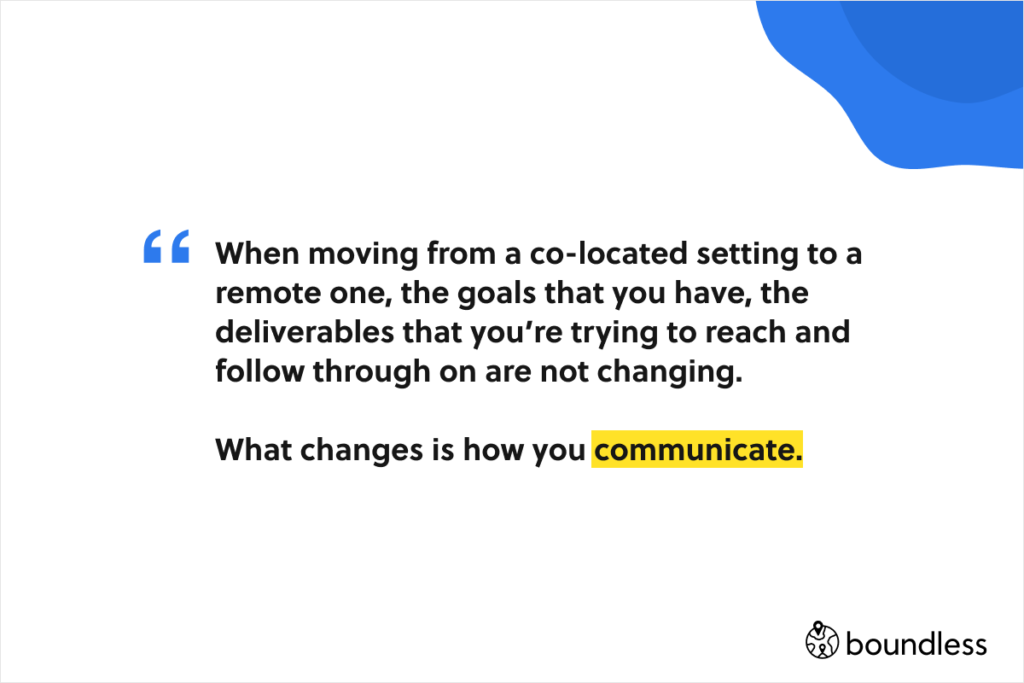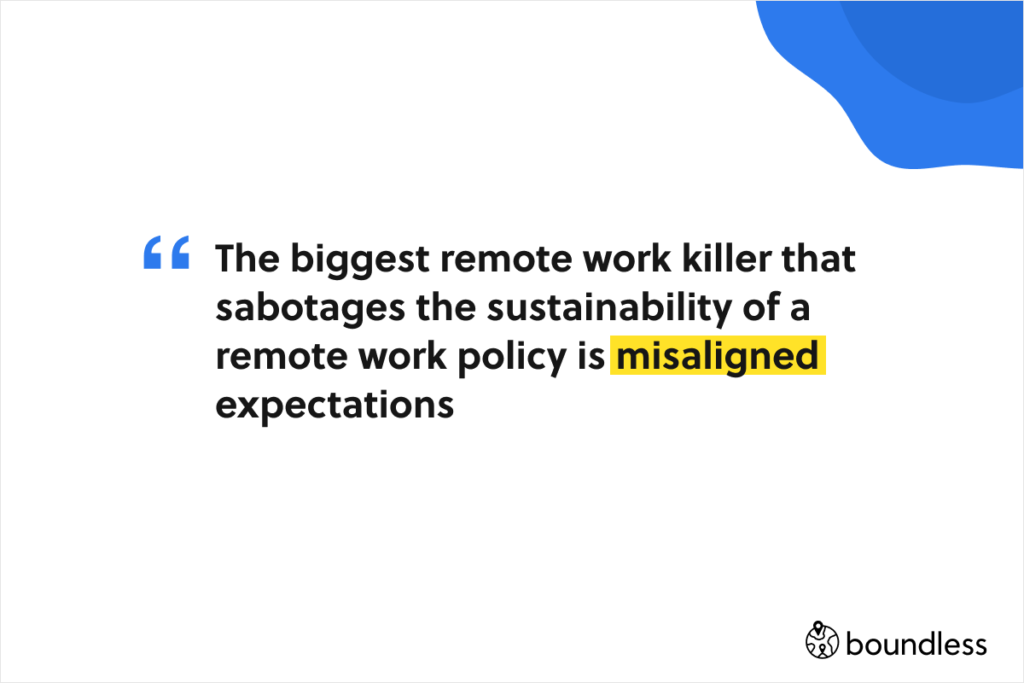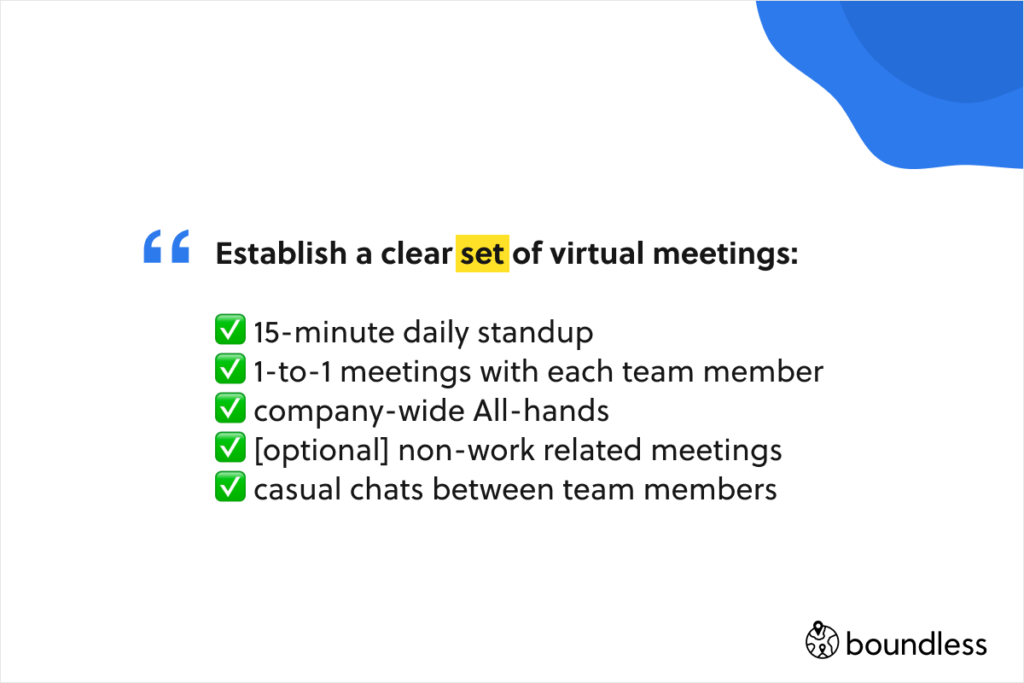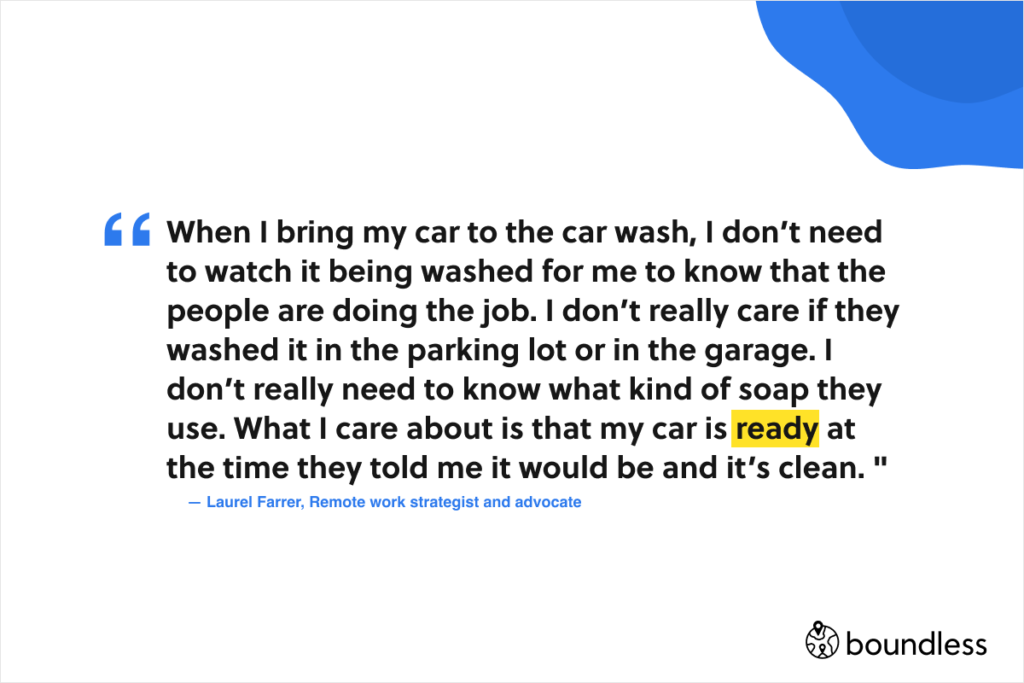To employees, employment may seem relatively straightforward at the front end - sign a contract, get paid once a month, receive a payslip, take some time off when needed. Managing the back end is where the complexity begins.

We have just entered some of the most bizarre times of our personal and professional lives. We are all being asked or forced to make changes we could previously never have imagined. How businesses operate and adjust as a result of social distancing in this new reality is drastic. Leaders and managers that may have never worked remotely and away from their teams need to quickly learn how to manage performance without being in the same place as their employees for the foreseeable future.
Workers now have to learn how to stay aligned on projects and in teams that they no longer have no physical interaction with. In an ideal world, when moving toward remote work, you would be advised to dedicate time and resources to planning and training to ensure a smooth transition. The world of 2020 is anything but ideal.
On behalf of Grow Remote, I recently co-hosted a webinar alongside Laurel Farrer (CEO, Distribute Consulting; Founder, Remote Work Association; and Forbes contributor), about some of the concerns that accidentally remote companies are facing. Below is a distilled version of the advice we gave.
It’s crucial to bear in mind the context of why companies such as yours are finding themselves having to work remotely. As much as you may want the business to carry on as usual, the toll the current situation is having on people is immense. Your employees are worried about their health, the health and emotional wellbeing of their families and vulnerable loved ones. Not only do they carry the weight of being a new work-from-home worker and figuring it out but being a school teacher to kids of varying ages and attention span. The world is in turmoil. It's tough to stay focused when there is so much going on. Some people will be more resilient than others. This is where your emotional intelligence as a leader will become extremely important, and you have to lead with empathy to effectively support your team.
You may be anxious yourself, but it's vital to try and maintain the work environment as a place of calm. Keep reassuring people about the state of the business, their value to the company and the importance of their contribution. Be prepared that people will need to express their anxieties and be proactive with checking in with them so they can express their concerns to you rather than in more public-facing channels.
The greatest thing that you can do specifically for those team members that are feeling stressed or anxious is to communicate with them. At the time of the webinar, Laurel had two members of her team that were quarantined. Everyone on the team had been sending them messages to remind them that they may be isolated, but they are not alone. The team was there for them. They were keeping up with them on Slack throughout the day, and making sure they felt engaged and remembered.

Excellent communication is at the heart of making remote work, work. With the change from co-location to a remote setting, the goals that you have, the deliverables that you're trying to reach and follow through on are not changing. What mainly changes is how you communicate.
You have to be very clear on every aspect of work and expectations and create guidelines on how the business operates, how people are expected to work, how communication will be happening. In remote work, over-communication is just communication because your connection to the world is what you type on your keyboard or what you say over a microphone. Your emotions, contribution, and leadership are all emanated through your written and verbal communication.
Beyond setting clear guidelines, effective communication will help you find out how people are feeling. With remote work, you need to be a little more literal in your questioning in how people are getting on. They may not be as able to communicate how they are coping with their workload or new working practices when they are remote. It may be very easy and tempting to go invisible when something is going wrong. You must watch out for those cues and make sure that you have a clear view of how they are feeling, what questions they may have, and just how engaged everyone is. You have to continually check in with all of your team members, and over-communicate with them.
The most important piece of advice is to always use video for any check-ins or meetings. It could be via Zoom, BlueJeans, Google Hangouts or Skype. The tool doesn't matter. Be explicit that everyone is expected to always have their video turned on when joining a call. Otherwise, calls will be tough as it will be unclear who is speaking. It will also ensure everyone is much more engaged. It will help create a connection between participants, and will keep people more focussed. It will also help you to read the cues as to how people are feeling that I mentioned above.

As we have talked before on this blog, one of the most important things when it comes to remote is to be a legal and compliant employer. There are quite a few regulations to adhere to and having a remote work policy is a great way to establish practices that will comply with them. This free checklist created by Distribute Consulting is an excellent start for creating a remote work policy. Aside from making sure you are legal, it puts in writing the murky uncertainties around how work is performed: When do I need to be online and when is it okay to be offline? What meetings am I supposed to go to? Am I supposed to have a quiet environment? Am I okay to have my kid on my lap?
All of those questions that cause misunderstandings between workers and managers can quickly be addressed with a good remote work policy. As you create your company's remote policy, think of yourself as a therapist. Think about what people are unsure of, what they are feeling, what they may or may not agree to, etc.
The biggest remote work killer that sabotages the sustainability of a remote work policy is misaligned expectations. The more you get on the same page about everything: how to support each other, how to stay engaged, how to communicate in a virtual environment, what people are working on and what they need help with, the better your team will perform. Remote work is still work. What makes it different to co-located office work are the subtle nuances that you need to be aware of and to adjust to make it successful.
Remote working only works when there is crystal clear alignment. Establishing a set cadence of virtual meetings and ways to track the progress of work is essential. Below are suggested virtual meetings that will help alignment and connection with your team:
Be mindful that it's easy to feel frazzled or just focus on productivity during daily standup meetings. As a leader, it's where your worries about productivity and delivering work may surface in direct or more subtle ways. If you're not careful at those moments, any form of insensitivity can cause a lot of problems and create a toxic culture.
It’s quite possible that people may say they are not sure about any of the questions you ask - that information is unclear to them, they are not sure how to proceed or simply don’t know. Make sure you do not shut them down by saying, you just need them to be productive. Make a note that there is an issue and bring it up during a one-to-one conversation in a calm manner.

All these combined will help you as a manager to feel a little more in control in terms of understanding how people are aiming to deliver their projects. They will also keep workers focused and aligned.
We mentioned this in our previous article - the most important thing to making working remotely feel right for you as a manager is to shift your mindset from observing activity to observing accomplishment. That is as valid for yourself as it is for your employees. This way of looking at things is called "results-only work environment" or "results-based tracking."
Looking at work through this lens is a significant shift. It's hard, and it is scary, which is why, under normal circumstances, it never happens on a whim. Right now, you are going to have to take a leap. The more that you can get into the mentality of watching results instead of watching activity, it will become more natural. During the webinar, Laurel gave an excellent example to illustrate how to think about that:
"When I bring my car to the car wash, I don't need to watch it being washed for me to know that the people are doing the job. I don't really care if they washed it in the parking lot or in the garage. I don't really need to know what kind of soap they use. What I care about is that my car is ready at the time they told me it would be and it's clean. I trust them to do the job that I hired them to do."
You are probably overwhelmed with the new way of work and do not feel like you have the time to go through any training sessions to get better at this. The reality is, however, you need it more than ever now. Enrol in a course with companies such as Workplaceless. It will help you align on your expectations from remote and help you to understand how to be on the same page with people from a distance.

In the situation we are currently in, it's very easy to fall into overdrive mode, where you are focusing on dealing with all the overflow of new things you have to do. However, if you don't take care of yourself, you can quickly burn out. Self-care and self-management are crucial here. If you know you are the personality type that tends to zero in and hyper-focus on work, it will be easy for you to work 12 hour stretches without eating, without showering, without exercising. That is not sustainable. But you also have to be focused and disciplined to work. It's all about a balance between the two. Be in control of your time, your tasks and your energy.
I hope these pieces of advice can help in you becoming a better leader from a distance. Remember you are not alone in any of this. There are multiple resources out there, that many other businesses with experience working remotely are creating to help you at this time. If you have any questions, do not hesitate to get in touch through twitter: @boundless_HQ or email us at ask@stagingwebsite.boundlesshq.com. Learn more about the growing number of countries we support and how you can start employing people in them here.
To learn more watch the full video of the conversation I had with Laurel

To employees, employment may seem relatively straightforward at the front end - sign a contract, get paid once a month, receive a payslip, take some time off when needed. Managing the back end is where the complexity begins.

When you work from the office, a lot of the things you do during the day come automatically to you. As you move to a remote way of work, you will have to evaluate the importance of each thing you and your team do and cut out the fluff.

If leaders do not make their companies fit for a world where a remote and distributed way of work is far more prevalent, they risk becoming less competitive employers. A change in how we operate is needed, which goes beyond opening up the recruitment pool and advertising remote-friendly jobs.

Moving away from your home country is not as simple as making a down payment on a flat and jumping on a plane. There are plenty of complexities to navigate, such as complying with local tax obligations, and figuring out how you’ll interact with your colleagues and perform effectively in your role.

Running a global, remote-based organisation carries a raft of HR compliance challenges. But fear not! We’ve come up with a simple guide to help you meet these challenges head-on and establish yourself as a leading, people-first employer.

For this guide to Ireland, we have gathered all the rules and regulations employers and employees need to comply with, and compiled the latest tax breaks and allowances that are in place.